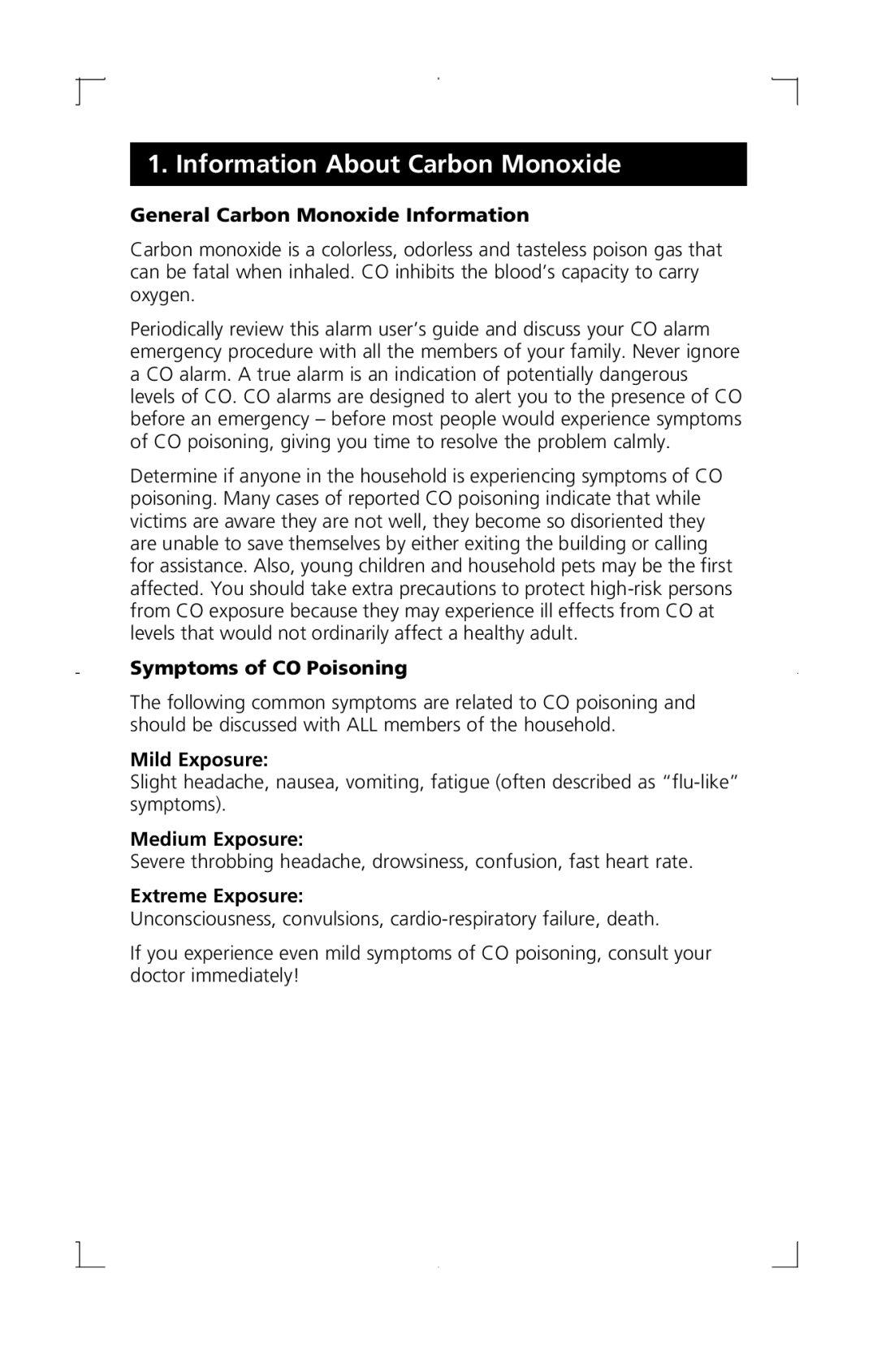
1. Information About Carbon Monoxide
General Carbon Monoxide Information
Carbon monoxide is a colorless, odorless and tasteless poison gas that can be fatal when inhaled. CO inhibits the blood’s capacity to carry oxygen.
Periodically review this alarm user’s guide and discuss your CO alarm emergency procedure with all the members of your family. Never ignore a CO alarm. A true alarm is an indication of potentially dangerous levels of CO. CO alarms are designed to alert you to the presence of CO before an emergency – before most people would experience symptoms of CO poisoning, giving you time to resolve the problem calmly.
Determine if anyone in the household is experiencing symptoms of CO poisoning. Many cases of reported CO poisoning indicate that while victims are aware they are not well, they become so disoriented they are unable to save themselves by either exiting the building or calling for assistance. Also, young children and household pets may be the first affected. You should take extra precautions to protect
Symptoms of CO Poisoning
The following common symptoms are related to CO poisoning and should be discussed with ALL members of the household.
Mild Exposure:
Slight headache, nausea, vomiting, fatigue (often described as
Medium Exposure:
Severe throbbing headache, drowsiness, confusion, fast heart rate.
Extreme Exposure:
Unconsciousness, convulsions,
If you experience even mild symptoms of CO poisoning, consult your doctor immediately!
